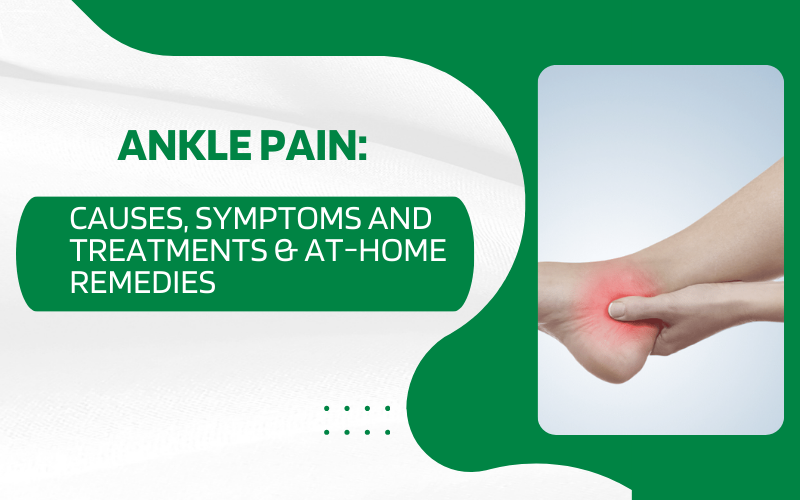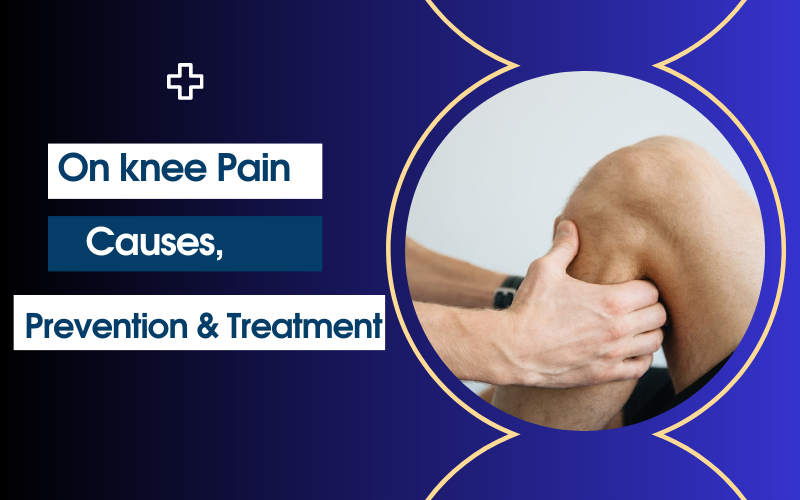What is ankle pain?
Ankle discomfort is a prevalent condition that impacts individuals across various age groups and backgrounds. Whether it’s a sudden injury from a misstep or a chronic condition, ankle pain can significantly impact daily life.This essay will delve into the different factors that contribute to ankle pain, as well as the symptoms, treatment options, and methods of prevention associated with this condition.
Causes of ankle pain?
Ankle pain can arise from various factors, encompassing injuries, excessive use, and medical ailments. Among the prevalent causes is a sprain, which transpires when the ligaments responsible for supporting the ankle endure stretching or tearing. This occurrence can take place while engaging in physical activities like running, jumping, or even walking on uneven terrain.
Another common cause of ankle pain is a fracture, which is a break in one or more of the bones that make up the ankle joint. Fractures may occur due to an injury, like a fall or a direct impact to the ankle, or from excessive strain, like repeated stress on the bones.
Additional factors that may contribute to ankle discomfort encompass tendonitis, characterized by the inflammation of tendons that link muscles to bones; arthritis, marked by joint inflammation; and nerve impairment, which can arise from conditions like diabetes or peripheral neuropathy.
What are the Symptoms of Ankle Pain?
The indications of ankle discomfort may differ based on the origin and seriousness of the ailment.Common symptoms include:
1. Pain: Ankle discomfort can vary in intensity from slight to extreme and may present as sharp, dull, pulsating, or persistent.
2. Swelling: Inflammation of the ankle joint can cause swelling, which may be accompanied by redness and warmth.
3. Stiffness: Ankle rigidity can hinder joint movement, particularly during the morning or following extended periods of inactivity.
4. Instability: Damage to the ligaments or tendons in the ankle can lead to instability, making it feel like the ankle is giving way or unable to support the body weight properly.
5. Bruising: Injuries to the ankle can cause bruising, which occurs when blood vessels under the skin are damaged and leak blood into the surrounding tissues.
Treatments
How do you Relieve Ankle Pain?
The management of ankle discomfort varies based on the root cause and the seriousness of the ailment. In numerous instances, implementing self-care techniques can effectively relieve symptoms and facilitate the recovery process.These measures may include:
1. Rest: Giving the ankle time to rest and heal is essential for recovery. Engaging in activities that worsen pain or discomfort should be avoided in order to prevent additional injury.
2. Ice: Applying ice to the impacted region can aid in diminishing inflammation and alleviating discomfort. Ice packs should be applied for 15-20 minutes at a time, several times a day.
3. Compression: Applying a compression bandage around the ankle can aid in decreasing swelling and offering stability to the joint.
4. Elevation: Elevating the ankle above the level of the heart can help reduce swelling by allowing excess fluid to drain away from the area.
5. Pain relievers: Over-the-counter pain relievers like ibuprofen or acetaminophen are effective in alleviating pain and reducing inflammation.
In more severe cases of ankle pain, medical intervention may be necessary. This may include:
1. Physical therapy: A physical therapist can develop a customized exercise program to strengthen the muscles around the ankle joint and improve flexibility and range of motion.
2. Bracing or splinting: Using a brace or splint to immobilize the ankle can effectively stabilize the joint and mitigate the risk of additional harm.
3. Injections: Corticosteroid injections are commonly employed to diminish inflammation and alleviate pain in instances of severe arthritis or tendonitis.
4. Surgery: In certain instances, surgical intervention might be required to rectify impaired ligaments or tendons, or to readjust broken bones.
Preventive Measures for Ankle Pain:
Although it may not be feasible to completely avoid ankle pain, there are measures that can be implemented to minimize the chances of getting injured.
1. Wear supportive shoes: Choose shoes that provide adequate support and cushioning, especially if you engage in activities that put stress on the ankles, such as running or playing sports.
2. Warm up before exercise: Performing dynamic stretches and exercises prior to engaging in physical activity can assist in priming the muscles and ligaments for the exertions associated with exercise.
3. Strengthen the ankles: Integrate workouts focusing on the muscles surrounding the ankles, including calf raises, ankle circles, and balance exercises, into your daily exercise regimen.
4. Gradually increase intensity: Avoid sudden increases in the intensity or duration of exercise, as this can increase the risk of injury. Instead, gradually build up your level of activity over time.
5. Be mindful of your surroundings: Be cautious of any uneven surfaces, obstacles, or potential hazards that may lead to tripping or twisting your ankle.
Conclusion
Ankle pain is a common condition that can have a significant impact on daily life. Understanding the origins, signs, therapies, and preventative actions associated with ankle discomfort enables you to effectively address your symptoms and lower the likelihood of sustaining future injuries. If you experience persistent or severe ankle pain, it’s important to seek medical attention to determine the underlying cause and receive appropriate treatment.




